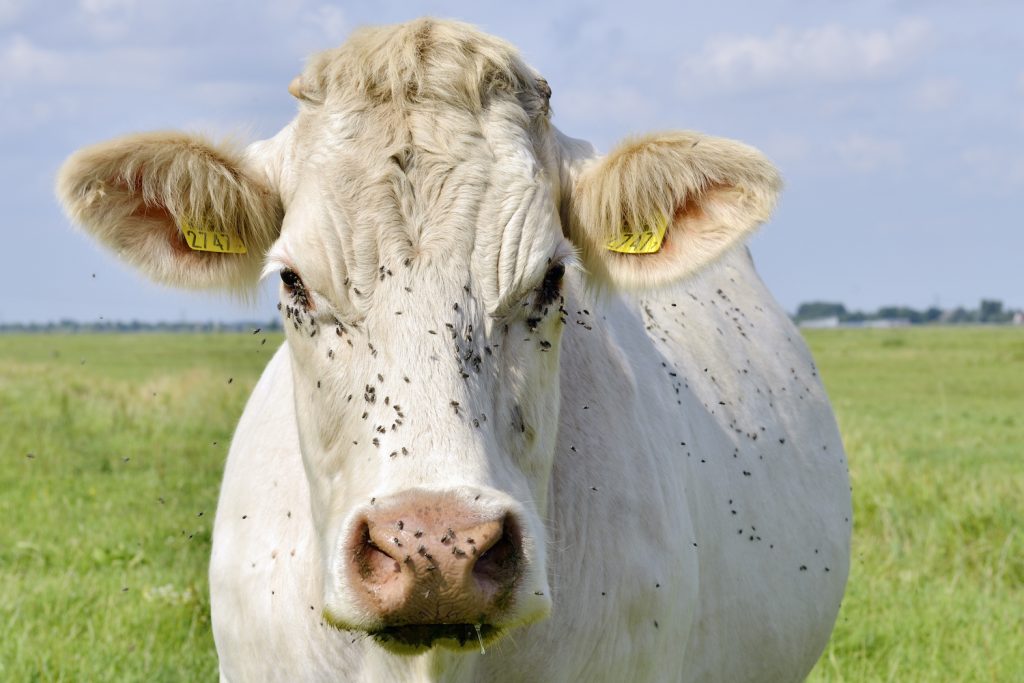Fly control: Top tips for cattle and sheep
24th June 2020
With over 20 different species affecting livestock in the UK, flies are one of the biggest ectoparasite problems faced by farmers across the country. From loss of productivity due to reduced grazing time, through to acting as a vector for diseases, the impact of flies can be significant and, if not appropriately controlled, can even result in livestock fatalities.
With over 20 different species affecting livestock in the UK, flies are one of the biggest ectoparasite problems faced by farmers across the country. From loss of productivity due to reduced grazing time, through to acting as a vector for diseases, the impact of flies can be significant and, if not appropriately controlled, can even result in livestock fatalities.
Veterinary surgeon Tom Sparks, of Armour Veterinary Group in Ayrshire, provides his top tips.
Feeding on liquids excreted by the animal, including blood, tears, sweat, urine and faeces, flies can be categorised into biting and non-biting subspecies. In addition to causing intense irritation and sometimes even self-inflicted trauma, common fly problems in cattle can manifest as either summer mastitis – whereby biting flies introduce infection into the mammary gland – or bovine keratoconjunctivitis (pink eye), where flies spread infection through feeding on sweat and tears.
Sheep farmers will be all too familiar with fly strike. Attracted by long fleece, wounds or footrot, female flies lay up to 250 eggs on the fleece. Upon hatching 12 hours later, the resulting maggots begin to attack the flesh itself.
Reducing exposure
As is often the case regarding animal health, prevention is definitely better than cure. It can certainly be advantageous to avoid grazing cattle and sheep near stagnant water and, where practical, avoid grazing near overhanging trees in fields during risk periods. By achieving this, you should be able to avoid the main breeding habitats for most of the fly populations, and by default decrease the exposure of flies to livestock.
Pour ons and tags
Most commercially available pour-on preparations contain cypermethrin or deltamethrin and are applied onto vulnerable animals at 3-4-week periods throughout the risk periods. Early season application of the first pour-on treatment is an essential requirement. This avoids the build-up of the fly population around the herd or flock in question and so reduces the overall population.
Other control options available include insecticide impregnated ear tags or tail bands. Whilst more expensive and more labour intensive in their application compared to the pour on alternatives, the tags are often found to be useful due to duration of action – offering season-long protection.
Biological control
Relatively new biological controls of flies are now becoming increasingly popular in calf sheds or in intensive housed systems. These rely on fly parasites being introduced into the shed in order to reduce the breeding population of pest flies. Thereby inhibiting the nuisance fly reproduction, they can offer a more sustainable approach to fly control on farm.
As farms across the country are generally forced to become more intensive, with increased pressure on stocking densities, flies and their associated problems may become a bigger issue in the future. However, with appropriate planning and simple measures put in place, effective fly control for both cattle and sheep can be achieved – not only improving animal health and welfare, but indirectly increasing efficiency and productivity of livestock systems.

